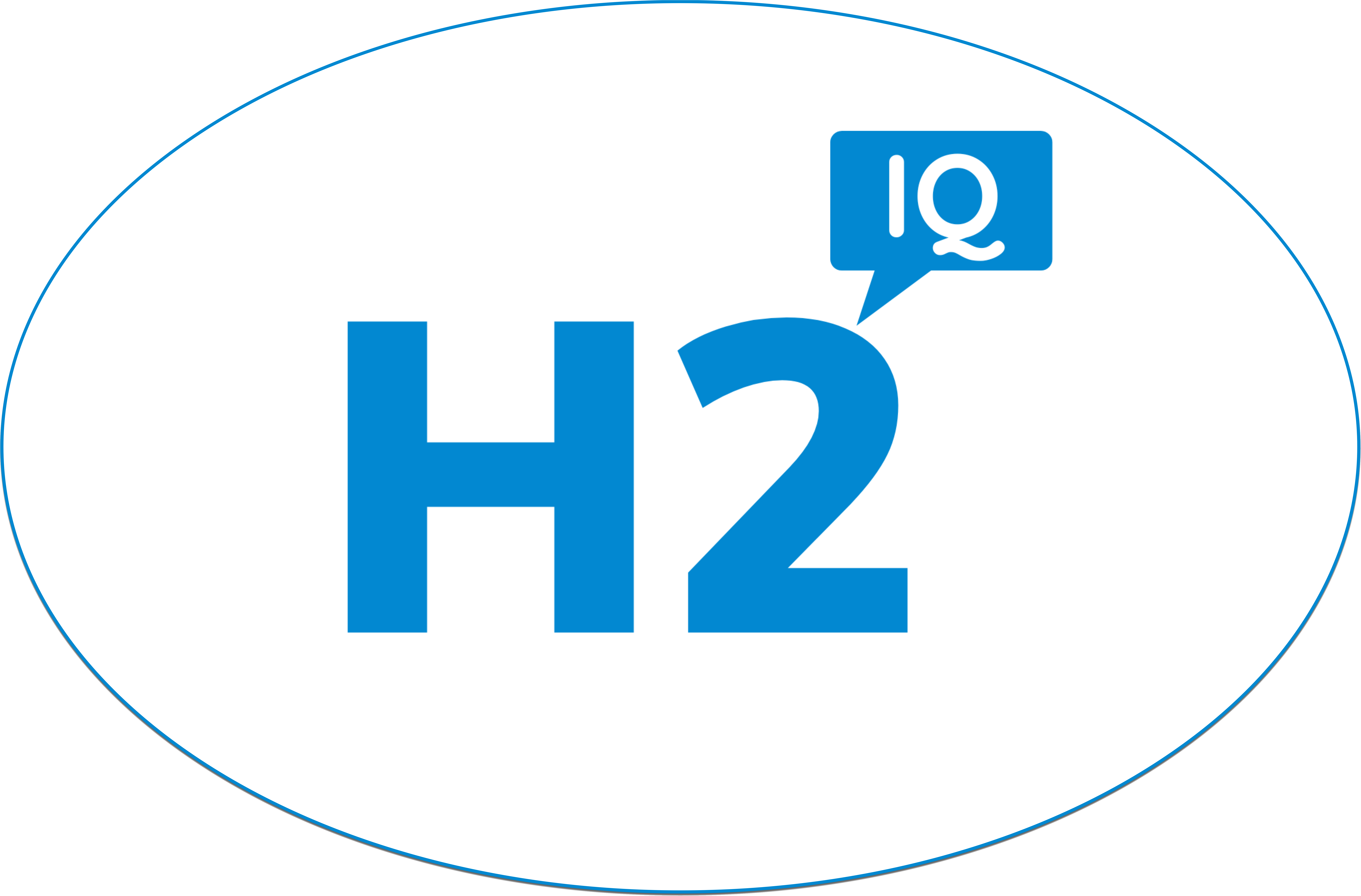Climate change and the detrimental effects of greenhouse gas emissions are no longer questioned. France and many other countries worldwide have acknowledged the science behind these issues and have created plans to mitigate the damage. Energy production methods are shifting from fossil fuels like oil to renewable resources like water, wind, and, most recently, hydrogen. Hydrogen is an easily sourced element that can also be used to provide clean energy, depending on the production method.
France’s Hydrogen Strategy
France has taken a hard stance against fossil fuel use in the country. The country announced legislation in August 2022 that prevents advertisements for all energy products related to fossil fuels. This includes petroleum products and energy resulting from coal combustion. Natural gas advertisements are still allowed, but new rules are expected to be introduced in 2023. These bans are preceded by steps to reduce the country’s reliance on fossil fuels and move toward cleaner energy sources.
2018 French Hydrogen Strategy
This approach was the first active step in supporting hydrogen energy as a reliable and sustainable method to power the country while making France a world leader in hydrogen technology. Through 2030, resources will be set aside for developing a low-carbon hydrogen industry on an international scale through the Investments for the Future Programme (PIA).
There were three main objectives of this plan: develop more green hydrogen for industrial use, use hydrogen to complement the battery sector, and stabilize energy networks. The goal was to instill 20% to 40% hydrogen into the energy industry by 2028. There were plans for industry and the energy market, but the largest portion of the plan was targeted toward transport and fuel cell vehicles. The plan also included measures to install hydrogen filling stations.
2020 National Strategy for the Development of Carbon-Free Hydrogen in France
Two years later, France released a new hydrogen plan that considered the COVID-19 pandemic and subsequent recovery plans. This plan builds on the 2018 hydrogen plan but focuses more on decarbonized hydrogen. Hydrogen stores and transports energy, but the molecule does not exist on its own. It must be harvested, and the form of harvest dictates how clean the energy is.
A significant portion of the hydrogen used today is produced from fossil fuels like coal, oil, or natural gas by using processes that release high levels of greenhouse gases. Within France’s oil and chemical industry, hydrogen is already commonly used, but this hydrogen is fossil-based and annually generates around 9 million tons of carbon dioxide. Alternatively, hydrogen can be produced through the electrolysis of water. This hydrogen is carbon-free as neither its production nor use emits carbon dioxide. France intends to move toward this cleaner version of hydrogen usage, and this plan was designed to meet that intent.
Seven billion euros will be committed to meeting the three priorities within this national strategy. The three priorities that have been set up under this new plan are to install electrolyzers in enough volume to make a significant contribution to decarbonization, develop clean mobility for heavy-duty vehicles, and build a French industrial sector that guarantees technical prowess.
Develop a French Electrolysis Sector
Decarbonized hydrogen is the focus of this advancement — electrolysis has been identified as the best and most promising way to accomplish this goal in France. The country intends to install 6.5GW of electrolyzers before 2030. It is an ambitious goal, but France has outlined a set of tools to develop high-capacity projects with visibility around demand and achieve profitability by moving to an industrial scale. An example of an implemented action to meet this priority is the construction of an Important Project of Common European Interest (PIIEC/IPCEI) on hydrogen. It will support research and development in electrolyzer industrialization and apply these solutions to the industry. Approximately 1.5 billion euros have been set aside for this project.
The decarbonizing industry will also replace current fossil hydrogen by removing fossil fuels and implementing decarbonized hydrogen processes. This will have implications for refining, the chemical industry, and industries like electronics and food processing that use hydrogen in smaller quantities. This will be supported through regulation, taxation, and compensation mechanisms once the technology has been developed.
Develop a Hydrogen-Powered Heavy-Duty Mobility Offer
Because hydrogen meets the needs for high engine power and long range, it is particularly suited for heavy-duty vehicles. Large vehicles that could be powered with hydrogen include light commercial vehicles, refuse collection vehicles, heavy goods vehicles, buses, and regional/ interregional trains. This specific market should be targeted because it requires long-range solutions that batteries may not be able to meet. There are also promising French companies within this market.
France intends to have 800 to 2,000 large, hydrogen-powered vehicles on its roads before 2028, along with technological developments for rail and air transport. A call for proposals aims to develop or improve components of this sector, and it has been allocated 350 million euros.
Another portion of accomplishing this goal is creating strong partnerships between the industry and regional authorities to best synchronize offers and development of uses. Pooling this demand between the two groups will promote maximum economies of scale.
Support Innovation, Research, and Skills Development to Promote Uses of the Future
Research and innovation support are requirements to develop the decarbonized hydrogen goals. There are many potential uses for the hydrogen developed as a result of this strategy, such as:
- Stabilizing energy networks
- Powering aircraft and ships
- Reducing carbon dioxide emissions in industrial processes
- Decarbonizing the gas sector
To speed up these potential developments, the strategy offers tools to entice professionals to create the technology. Priority research programs have been allocated financial benefits — one such program was allocated 65 million euros.
Developing the hydrogen industry requires workers to maintain hydrogen technology, along with quality managers, safety managers, and environmental managers. Firefighters and engineers will also need to be trained in this technology so it can be implemented in their work. To meet this need, the State will develop job and qualification campuses that work together with industry companies to develop new initiatives or continue training educational courses. This collaboration has been allocated 30 million euros.
Current Hydrogen Development Projects in France
The pledge of financial incentives has caused a spike in hydrogen research and development projects in France. GRTgaz has set out to determine the feasibility of an industrial-scale power-to-gas process, as well as test the injection of synthetic methane and hydrogen into a transmission network through a 1MW hydrogen production facility. It will also test an industrial-level carbon dioxide capture unit for methane.
GRTgaz is also developing a project with CREOS to make a 70km hydrogen transport infrastructure accessible between Germany and France. Hydrogène de France and Teréga have combined to find solutions for significant hydrogen energy storage by studying the possibility of underground storage with hydrogen obtained from water electrolysis. Lhyfe, CEA Tech, and IRD have joined forces in three research and development partnerships related to green hydrogen production by electrolysis using electricity produced in offshore wind turbines.
In the transportation sector of hydrogen power, its costs are still much higher than its competitors. This has prompted the French Environment and Energy Management Agency to encourage green investments by offering state subsidies for programs that apply. Qualified projects to date include the development of hydrogen mobility in the railway sector and the building of regional hydrogen recharging stations.
France’s Movement Toward Cleaner Hydrogen
In 2021, France formed the National Hydrogen Council to ensure the new Hydrogen Strategy was effectively implemented. The council’s role is to structure exchanges, particularly in the industrial sectors, between stakeholders and the State while also measuring the progress of planned actions to quickly identify any potential obstacles.
The hydrogen usage rate the country is trying to implement is up to 40% by 2030 while also decreasing its fossil fuel consumption by 30%. The plan is for 3.4 billion euros to be spent between 2020 and 2023 and 3.8 billion euros to be spent from 2023 to 2030. This goal is ambitious and financial influx, but France has fully acknowledged the benefits of clean hydrogen for the country and its citizens:
- Economy boost. France has pledged 7 billion euros to build a hydrogen economy. The goal is to increase hydrogen demand by expanding its capabilities. The financial influx into the program will aid researchers with creating the technology and breaking into the hydrogen’s predicted worth of around $500 billion. The French government also hopes its thorough hydrogen plan will create between 50,000 and 150,000 jobs.
- Supply security. Hydrogen can be found in abundance all over the globe. Because France has limited fossil fuel availability, it must import all its coal and most of its oil and natural gas. This puts France at the mercy of any global issues that could affect the supply chain, like the Ukrainian conflict. Sourcing the much more abundant hydrogen can afford France more self-sufficiency for its energy needs.
- Transportation options. Hydrogen is a stable molecule that can be transported and held in both liquid and gas forms. Liquid hydrogen can be stored in containers and tanks, while gaseous hydrogen can be moved through pipelines. Since France is increasing its electrolysis potential, hydrogen can be stored even in the more stable form of water.
- Pollution decrease. Hydrogen can be a completely carbon dioxide-free process when produced from water electrolysis. As clean hydrogen use increases, fossil fuel burning — and the subsequent pollution — will decrease. This is important to France, as air pollution and climate change are two important environmental issues the country must work to mitigate. Its Hydrogen Strategy aims to reduce carbon dioxide emissions by 6 million tons by 2030 and reach carbon neutrality by 2050.
The Race for French Hydrogen Power
France intends to increase its low-carbon and renewable hydrogen use to 20% to 40% of its total energy usage by 2030, with a 6.5GW electrolysis capacity. In 2020, nine countries besides France adopted hydrogen strategies. Among them are:
- Canada. Intends to supply 30% of its power with hydrogen by 2050
- Portugal. Aims to increase hydrogen use to 5% in its final energy consumption by 2030
- Spain. Plans to install electrolyzers that produce at least 4GW before 2030
- Chile. Plans to have 5GW of electrolysis capacity in development by 2025
The largest problem France will face in meeting its hydrogen goals is that much of the technology needed has not been developed yet or is only in its early stages. Meeting its hydrogen strategy plans will require a rapid technology influx, but the government has planned for this with significant contributions to current and future research. France also passed the Climate and Resilience Law, which allows local authorities to participate in hydrogen development. Though France’s plan is ambitious, there is enough determination, forward drive, and citizen inclusion to potentially meet the goals outlined in its hydrogen strategy.





